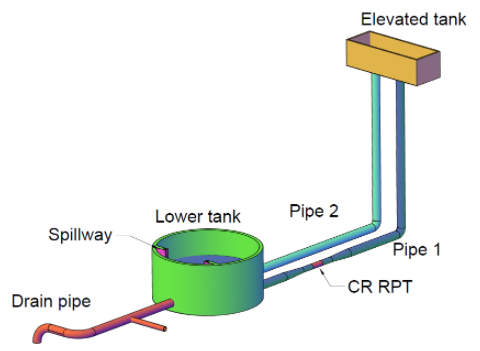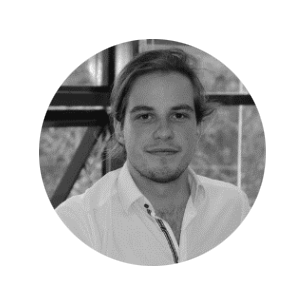Challenges Combining Mechanical and Eletrical Components

To shift the operating range of PSH into the low-head region, ALPHEUS proposes a novel system comprised of several newly developed components. Each of these components is aiming to push the technology into the next development stage, improving its capability to provide bulk energy storage and ancillary services while being economically viable. The development is split into a number of work packages: turbine design (WP2), power take-off (WP3), civil structures (WP5), grid integration (WP6) as well as integration and validation (WP4).
Examples of the developed concepts consist of a novel contra-rotating turbine design, axial-flux motor generators and a dedicated grid- and generator-side control. Integrating these components requires in-depth understanding of their individual interaction and influence on system characteristics and performance. The interaction as well as performance and dynamic behavior of the system employing these novel components is not yet known. Understanding these will enable improvements on a system level and eventually lead to an increased ability to perform grid stabilization.
Detailed models of hydrodynamics, mechanics and electrical systems allow for in-depth simulation of their behavior. However, to integrate the individual components such as the runners and motor-generators, it is required to not just study their isolated behavior but also how they affect each other. In a low-head application, as the one proposed by ALPHEUS, larger masses of water under a reduced head power the turbomachinery. This leads to increased torque on the runners and motor-generators. Moreover there is a potential for an increase in risk of water hammer and cavitation as well as changing motor-generator loss properties.

Practically, this integration will happen for the first time during a series of experiments in collaboration with the TU Braunschweig. A 50kW model-scale of the proposed system is being designed and constructed. The diameter of the counter rotating RPT is scaled down to approximately 30 cm exposed to a head around 9m between the elevated and lower tank. The spillway allows to adjust this head. When scaling down such a system, it needs to be decided which components should be accurately represented; in this case, the priority lays on the hydrodynamics in combination with integrating and testing the axial-flux motor-generators.
The initial setup will test the optimized design of both runners but will not include the dedicated motor-generators that are being developed. The goal of the first set of experiments, projected to start towards the end of 2021, will be to validate CFD simulations and numerical models in steady state conditions. This will also give first results towards the hydraulic performance evaluation. If the simulations and models are validated, the performance of a full-scale prototype can be accurately predicted. In a later stage of the experiments, the motor generators developed by WP3 will be integrated and tested.
Aside from steady state results, to understand the interaction of the components, covering the system dynamics and studying transients would be of great value. Testing the dynamic behavior when switching between operating modes and ramping power could significantly help to evaluate the capabilities of the proposed system to provide energy balancing and the provision of ancillary services.
.
ABOUT THE AUTHORS

Dr. Antonio Jarquin-Laguna is currently working as a an assistant professor at the department of Maritime and Transport Technology from Delft University of Technology in the Netherlands. His research interests include offshore renewables, energy storage solutions and physical modelling. Within the ALPHEUS project, Antonio is taking the lead of WP4 regarding the turbine and PTO system integration. The aim of this WP is to provide measurement results from laboratory experiments of the complete model scale machine set for validation of the numerical models developed in other WPs as well as the assessment and monitoring of fish behavior.

Justus Hoffstaedt is a PhD candidate within the department of Maritime and Transport Technology at Delft University of Technology. His background lays in sustainable energy systems with a focus now on energy storage. The ongoing PhD project is part of ALPHEUS’ WP4 at the TU Delft. The scope of this PhD is to aid the integration by developing a comprehensive system model and participate in validation through the experiments conducted at the TU Braunschweig.

